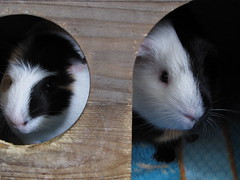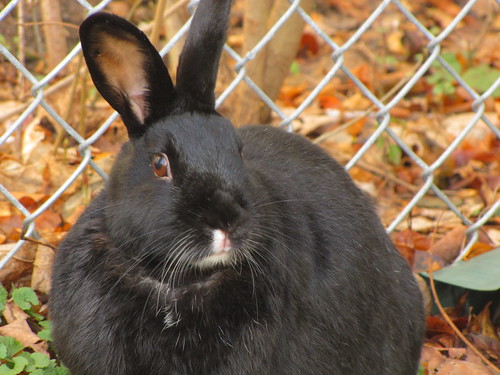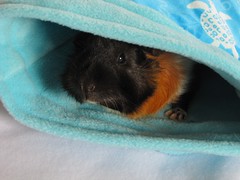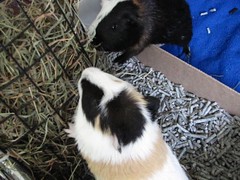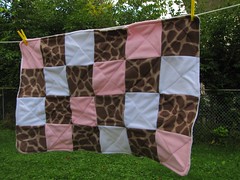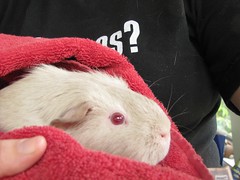
Phew! The past week has been utter insanity. So much running around, moving this, saving that, dropping things off and picking things up!
Let's start from the very beginning.
Saturday when I was at the farmer's market, I asked the farmer I buy my greens form if she would please bag up some of her scraps for the piggies at our local shelter. Later that day we went to the feed store for a bale of hay and to deliver some composting worms, and then headed to the shelter.
While we were doling out the greens to the shelter bunnies, Bob, a volunteer at the SPCA who worked with me and a few others on the swamp rescue, met up with us and told me about a guinea pig they had who was down on his luck. He had been at the shelter for a few weeks and had "something wrong with his butt." We went to see what was up down there and it was immediately clear to me that poor "Rocky" was impacted... pretty badly. Unfortunately I didn't have any experience dis-impacting piggies and the last thing I wanted to do was do it wrong and make a bigger mess out of the situation. I promised Rocky I would come back for him, and set him back down in his cage.
I went back on Monday, after a doctor's appointment, to meet with the vet tech there and do the deed. I was shocked to find that not only was the mass no longer sticking out of Rocky like a cork, but there didn't seem to be any obstruction when I poked around with q-tip after q-tip. At any rate, Rocky was in poor shape and I had already made up my mind that I wasn't leaving without him. I left all of my contact information with the tech, got some kisses from her three-legged pit bull and headed home with Rocky in tow.

Driving down the main road near our house I saw a little yorkshire terrier trott
ing down the sidewalk. He had a collar and tags but no leash and no person. It had begun to rain. I told Scott that I would 'scoop him up real quick and be home in five minutes.' Since this is Rocky's introduction I'll make a long story short, suffice it to say that I was not home in five minutes. I spent nearly two hours in the rain with this dog, until finally he let me drape my handkerchief over his face, pick him up and tote him home. He had recently been re-homed to our area and escaped from his yard, he was very scared and very obviously lost, but we contacted his owners and got him home safe.
Rocky was a sneezing, wheezing, shedding mess when I got home with the pup. I called the vet immediately and jammed him in for an appointment on Wednesday. I suspected he had mange mites--due to a bald patch on his hind end--and a URI in addition to his impaction.
At the vet today we were relieved to learn that rocky did not, in fact, have mites. He has a bacterial infection on his rump, a URI, and the vet was able to dis-impact mister Rocky in one fell swoop. The pig who had been silent since I got him home let out a shriek so loud that all the dogs in the kennels began barking and some even howled! Poor boy.
Our doctor thinks that his impactions may be chronic, but proper diet will definitely improve his condition. We're also thinking he may be a bit older [3-4+], since he seems to have limited control of his muscles back there.
The little man is safe and sound now in my big 2'x4' quarantine cage. He had a pretty poor diet at the shelter [where I am now a volunteer] so he is enjoying his hay, veggies, and seed-free pellets!

Is he a resident? It's not official yet, but my mom is taking Milo and Winston for a "test run" this week, to see if they like living in the day care, and if she likes having them there. So far all looks well. We have set them up in the "quiet" room, so if need be, they can be closed off from the kids. Their cage is just high enough that the kids can look, but not touch, and we've attached a crib bumper to the outside of the cage so no-one bumps their head accidentally.
If my mom likes Milo and Winnie, I'd be perfectly happy letting them be permanent residents of my mother's in-home daycare. And if my vet thinks that having Rocky neutered will improve his condition, or at the very least not make it any worse, there is a distinct possibility that he could be a permanent resident.
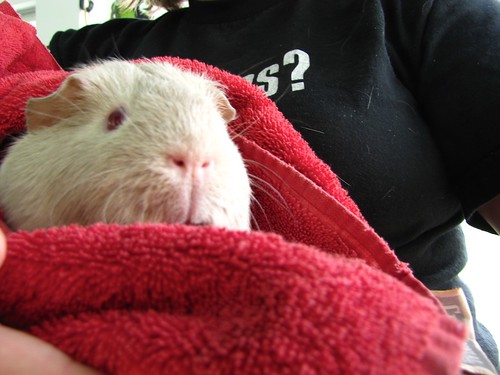

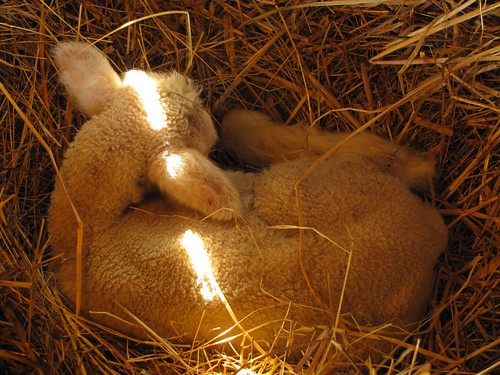
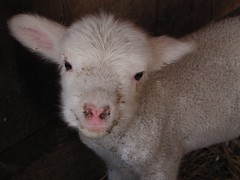 Hi everyone, happy Sunday! I'm writing to you today about having a Vet/Emergency fund for your little ones. This applies not only to guinea pigs, but any pet. It is always a good idea to have extra cash set aside so that, no matter the circumstance, you can give your friend the care he/she needs.
Hi everyone, happy Sunday! I'm writing to you today about having a Vet/Emergency fund for your little ones. This applies not only to guinea pigs, but any pet. It is always a good idea to have extra cash set aside so that, no matter the circumstance, you can give your friend the care he/she needs.
